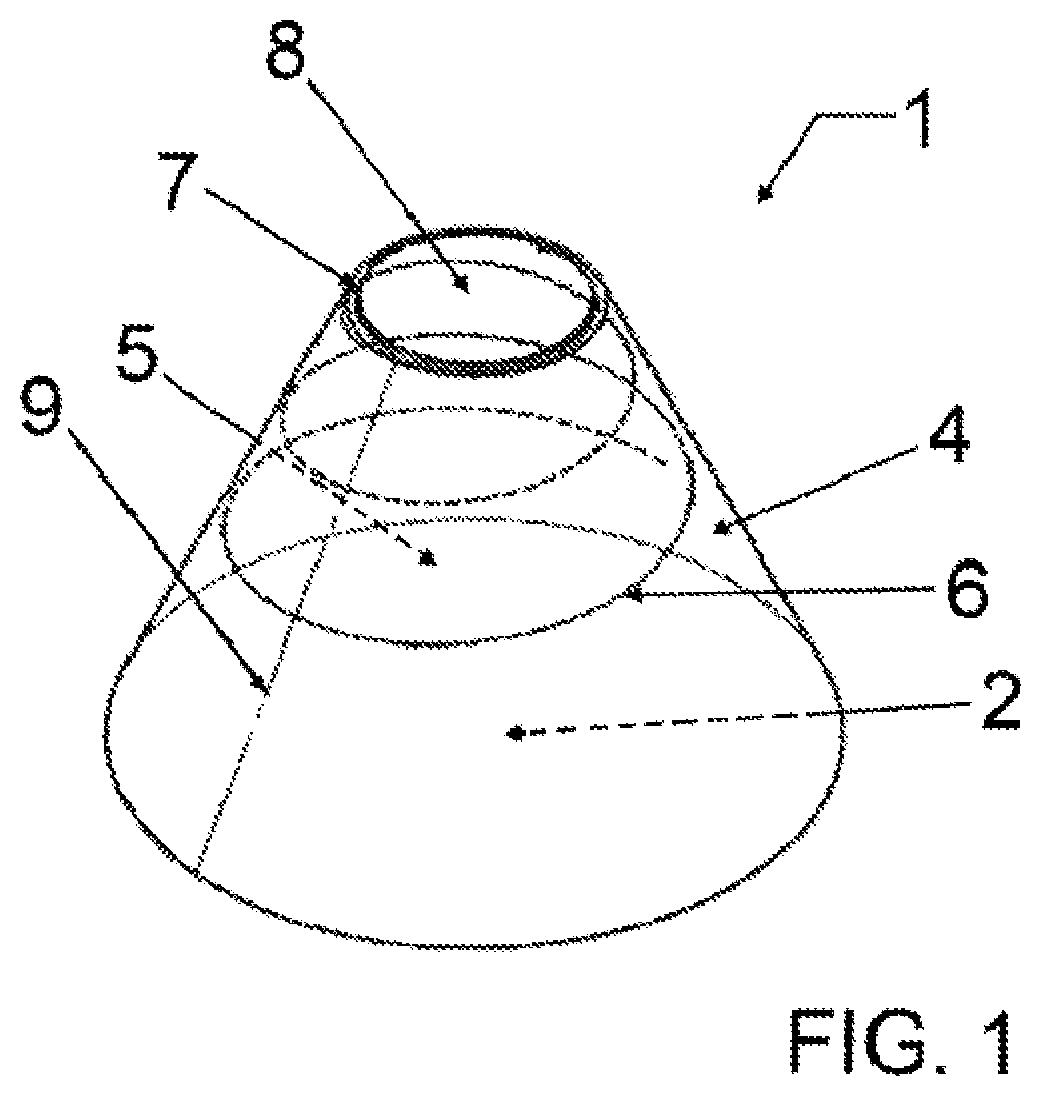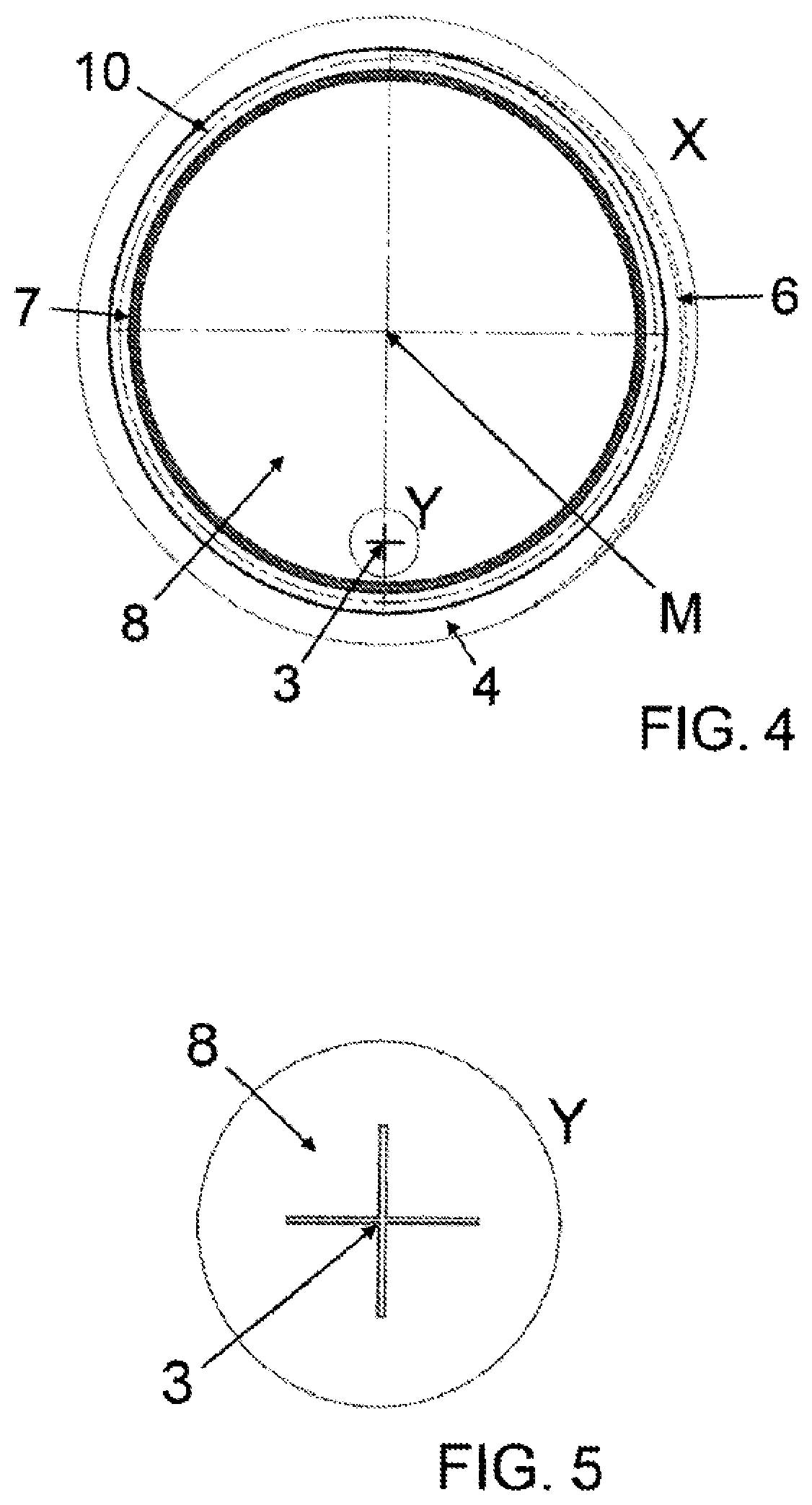Protective cover
a protective cover and protective technology, applied in the field of protective covers, can solve the problems of affecting and removing the layer or particles, etc., and achieve the effect of not impairing the effectiveness of wound treatmen
- Summary
- Abstract
- Description
- Claims
- Application Information
AI Technical Summary
Benefits of technology
Problems solved by technology
Method used
Image
Examples
Embodiment Construction
Protective cover 1 according to the invention illustrated in FIGS. 1, 2 and 3 respectively in an overall view in its non-deformed initial state has a shape resembling a jellyfish. The core component of protective cover 1 is there formed by an axially symmetric funnel-shaped hollow body 4 which along its longitudinal axis A comprises two openings 2, 7 which are in turn arranged axially and diametrically opposite to one another, where these openings 2, 7 are of different size.
Larger opening 2, in FIGS. 1 and 2 respectively facing downwardly, is in the later use placed on a body part of a patient, generally a limb, where the edges of opening 2 define a treatment area in which a wound to be treated with an irrigation fluid jet or other skin disorders of the patient (e.g. an ulcer) is located.
Hollow body 4 encloses a frustoconical interior which in later use acts as a treatment chamber 5 into which the head end (not shown) of a handpiece is introduced, from which in turn an irrigation fl...
PUM
 Login to View More
Login to View More Abstract
Description
Claims
Application Information
 Login to View More
Login to View More - R&D
- Intellectual Property
- Life Sciences
- Materials
- Tech Scout
- Unparalleled Data Quality
- Higher Quality Content
- 60% Fewer Hallucinations
Browse by: Latest US Patents, China's latest patents, Technical Efficacy Thesaurus, Application Domain, Technology Topic, Popular Technical Reports.
© 2025 PatSnap. All rights reserved.Legal|Privacy policy|Modern Slavery Act Transparency Statement|Sitemap|About US| Contact US: help@patsnap.com



